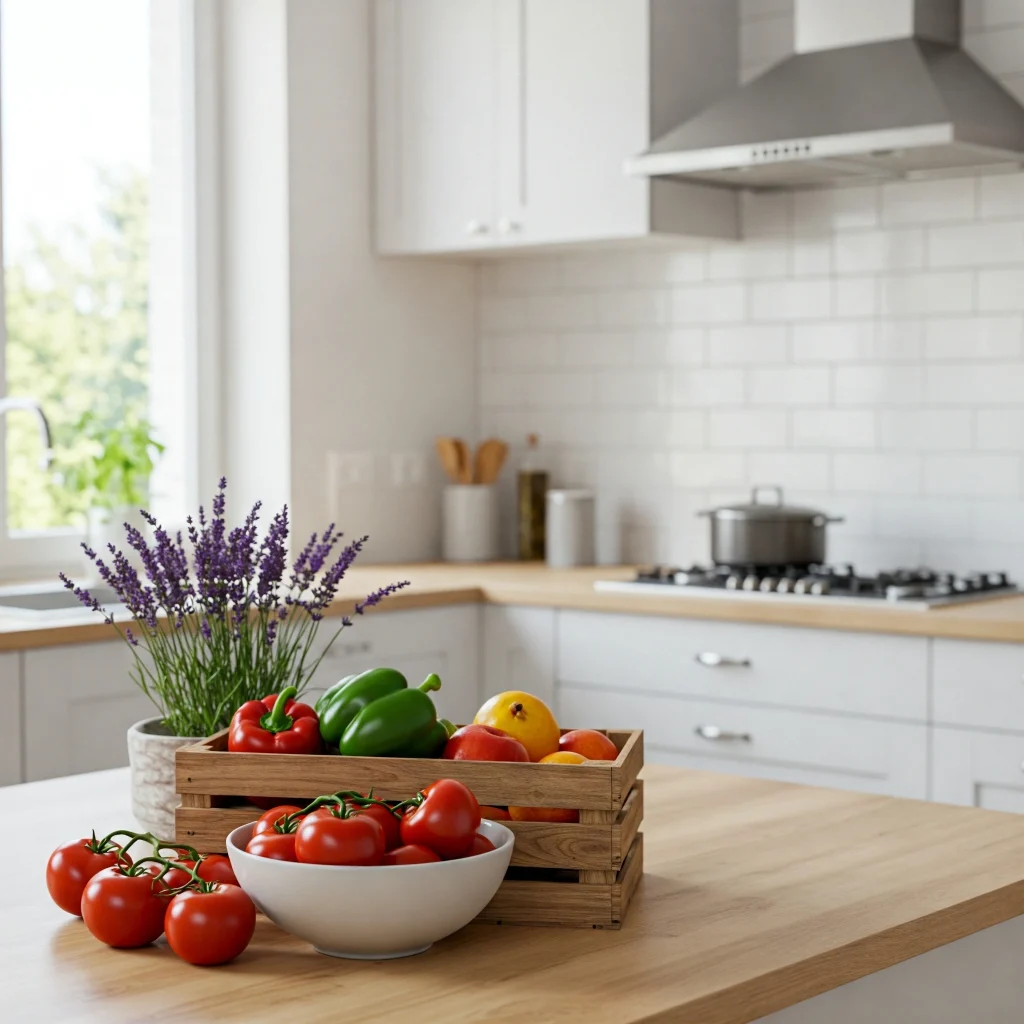
Recommendations for Cleaning the Kitchen and Preventing the Spread of Harmful Bacteria on Food
The kitchen is the heart of every home—a place where cleanliness and hygiene directly contribute to the health of the family. Below are some important recommendations on how to clean your kitchen effectively and prevent the spread of harmful bacteria onto food.
Proper Cleaning of Hands, Tools, and Surfaces
Thorough cleaning of hands, equipment, and surfaces is one of the most important actions we can take to protect our health. This helps eliminate bacteria and prevents the spread of harmful bacteria and viruses onto food.
Washing Hands
Always wash your hands before preparing, cooking, or eating food. It’s best to use warm water and soap. If you are in a situation where washing hands isn’t possible—such as while camping—you can use wet wipes or alcohol-based hand sanitizer before touching food.
Eliminating Harmful Bacteria and Viruses
Harmful bacteria can be eliminated with warm water and soap or with disinfectants. The following areas should be cleaned regularly:
Hands
Work surfaces
Cutting boards
Kitchen tools such as knives
Keep in mind that basic washing may not kill all bacteria. To destroy bacteria effectively, surfaces should be cleaned and maintained at temperatures above 70°C (158°F). While this temperature is too hot for handwashing, it is effective for disinfecting tools and surfaces.
Hot water and soap detach bacteria from surfaces, which are then washed away through the drainage system. While cold water can also be used, hot water helps soap to lather better, making it more effective in removing bacteria.
Cleaning Kitchen Equipment
Following SFBBCERT hygiene standards in the kitchen not only helps maintain food safety but also reduces contamination and improves food hygiene.
Dish Towels and Cleaning Cloths
Drying cloths, oven mitts, sponges, and dish gloves must be washed or replaced regularly. After washing, ensure they are completely dry before reuse, as damp and dirty cloths are ideal breeding grounds for bacteria and fungi.
Kitchenware and Utensils
All utensils should be thoroughly cleaned before food preparation to prevent cross-contamination. Use separate plates, bowls, and cutting boards for raw and ready-to-eat foods. Wash them completely between tasks to stop the spread of harmful bacteria.
Fruits and Vegetables
Maintaining hygiene from the washing to the cooking and storage of food is essential for preventing cross-contamination and preserving food quality.
Wash fruits and vegetables with clean water before consumption to remove any harmful bacteria. You can rinse them under running water or in a clean container where the surfaces are fully submerged. Start with cleaner items and then rinse each one again.
Peeling fruits and vegetables can also help remove bacteria from the surface—especially for root vegetables consumed raw.
Cleaning Products
A wide range of cleaning and disinfecting products is available. Always follow the instructions on the label to ensure that the product is suitable for surfaces that come into contact with food.
To completely eliminate harmful bacteria, ensure the following:
Use the cleaning product for the amount of time recommended by the manufacturer.
Check if the product needs to be diluted before use.
Cleaning products fall into two main categories:
Detergents:
Detergents remove dirt and grease, but they do not kill bacteria.
Disinfectants:
Disinfectants kill bacteria, but they must be used on a clean surface. If grease or visible dirt remains, disinfectants will not work properly. Always pay attention to the required contact time listed on the product label.
You can use disinfectants in a two-stage process:
First, use a disinfectant solution to clean the surface. This removes:
Dirt
Food particles
Oil and grease
Then, reapply the disinfectant to the now clean surface and allow it to sit for the recommended time to ensure full disinfection.
Conclusion
Maintaining proper hygiene and cleanliness in the kitchen not only helps preserve food quality but also prevents diseases and potential contamination. Adhering to health and safety standards ensures a safe and healthy environment for food preparation and consumption.
To ensure a hygienic environment at home or work and to elevate safety standards, take action now. Register today and benefit from expert consultations. Take a powerful step toward safeguarding your health!

No comment